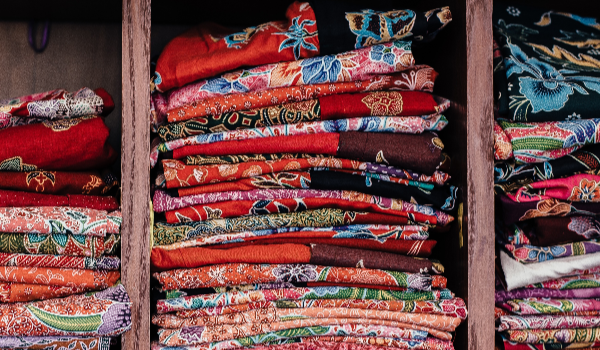
The Fabrics Used In Islamic Fashion

Image: Unsplash
Textiles from the Middle East have long been sought after for their quality and lightness, as these fabrics serve a purpose in the production of modest-wear classics such as abayas, hijabs and kimonos.
Due to the furious heat of the Middle East, fabrics have to be light and airy, to adhere to Islamic rules regarding modest dress and keep the wearer cool throughout the day. The most common form of Islamic women’s clothing is the abaya - a ubiquitous robe-like dress that covers the whole body save for the head, feet and hands.
Below, we’ll run through the fabrics used in modern abayas that form the eclectic and ever-changing world of Islamic fashion.

Image: AbayaBut
Georgette
The venerable fabric with French origins is very popular in Islamic fashion circles due to its ultra-lightweight properties. Typically synthetically made these days, georgette was originally made of silk in its 1930s heyday. A solid colour, georgette is a popular option for Islamic nightwear and abayas alike, while more premium wear may use silk georgette for a more opulent feel.
Chiffon
Another silken fabric choice, chiffon is especially popular for modest evening wear such as the abaya pictured above. Chiffon is smoother and more lustrous than georgette, so it has more of a function as a clothing option for Islamic weddings.
It’s easy to embellish chiffon with gemstones, but the material is also very fragile - so day-to-day wear isn’t the prime use of this fabric.
Viscose
All-weather comfort is paramount when it comes to Islamic fashion, especially when it comes to hijabs. Viscose is a common fabric for hijab manufacturers due to its reliability and comfort, especially when combined with a cotton hijab cap.
The fabric can stay cool in summer and provide insulation in winter, so it’s a great option for muslimahs that live in more temperate nations.

Image: AbayaButh
Nidha & crepe
Arguably the most sought-after of all abaya fabrics, nidha is an ultra-wearable fabric that originates from Saudi Arabia and is therefore suitable for very hot climates. Very light crepe abayas are also popular in the Gulf states, as they allow the breeze to pass through - this is the ultimate test of a high-quality crepe abaya. If the fabric sticks to the body and doesn’t let the wind through, then it’s likely to be a low-quality imitation of these premium fabrics.
Of course, there’s a whole world of Islamic fashion out there, utilising these four types of fabric to push the boundaries and create some eye-catching designs - so it’s well worth keeping an eye on the modest side of things.
Author bio:
Abi Proud is a content creator for AbayaButh - retailers of abayas, hijabs and a range of modest Islamic clothing for women.

2 comments
Hi, do you know where abaya both sources their material for the hijab included in their natural abaya with elasticated cuffs. It comes with a fabric border but I cannot find a scarf of that material which is super light chiffon and not soft or stretchy.
How can I buy